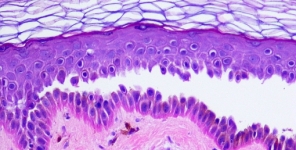Ipertrofia in macchie a vino-porto: prevalenza e caratteristiche dei pazienti in una grande coorte di pazienti
 Le macchie a vino-porto (PWS) possono ispessirsi e scurire con l'età. Poco si sa circa la patogenesi e l'epidemiologia dell'ipertrofia nelle PWS a causa della mancanza di studi di grandi dimensioni.
Le macchie a vino-porto (PWS) possono ispessirsi e scurire con l'età. Poco si sa circa la patogenesi e l'epidemiologia dell'ipertrofia nelle PWS a causa della mancanza di studi di grandi dimensioni.
Obiettivo — Abbiamo cercato di valutare la prevalenza e le caratteristiche dei pazienti con PWS ipertrofiche.
Metodi — Sono state esaminate le cartelle cliniche e le fotografie cliniche di tutti i pazienti con PWS che hanno visitano la nostra clinica tra il 2005 e il 2009 al fine di identificare l'ipertrofia. Ai pazienti sono stati inviati questionari riguardanti le loro PWS ipertrofiche.
Risultati — In tutto, sono stati inclusi 335 pazienti (età 0-81 anni; 69% femmine) con PWS. L'ipertrofia è stata trovata in 68 pazienti (20%; 32 maschi, 36 femmine) e classificata come ispessita (5%), nodulare (8%) o entrambi (7%). Il colore delle PWS ipertrofiche è stato principalmente rosso (50%) o viola (44%). I pazienti con ipertrofia nelle loro PWS sono stati per lo più (68%) di età superiore a 40 anni, e raramente (7%) più giovani di 20 anni. Tra i pazienti con età maggiore di 50 anni, il 71% di tutti i pazienti aveva ipertrofia nelle PWS. L'età media di insorgenza di ipertrofia nelle PWS è stata di 31 anni (12 anni per l'ispessita, 39 anni per la nodulare).
Limitazioni — Questo è stato uno studio retrospettivo in una popolazione selezionata.
Conclusione — L'ipertrofia è una caratteristica importante nello sviluppo delle PWS e colpisce la maggior parte dei pazienti di età superiore ai 50 anni. La profondità di colore delle PWS è associata con l'ipertrofia, mentre la localizzazione e la dimensione sembrano non essere correlate. Si dovrebbe prestare maggiore attenzione alla terapia e alla prevenzione delle PWS ipertrofiche. Dovrebbero essere distinti l'ispessimento diffuso e i noduli, come una diversa età di insorgenza dovrebbe indicare diversi meccanismi patogenetici.
Fonte:
Titolo: Hypertrophy in port-wine stains: Prevalence and patient characteristics in a large patient cohort
Rivista: Journal of the American Academy of Dermatology.
Autori: Anne Margreet van Drooge, Johan F. Beek, J.P. Wietze van der Veen, Chantal M.A.M. van der Horst, Albert Wolkerstorfer.
Affiliazioni: Department of Dermatology, Netherlands Institute for Pigment Disorders, Academic Medical Center, University of Amsterdam, Amsterdam, The Netherlands
Abstract:
Background — Port-wine stains (PWS) may thicken and darken with age. Little is known about the pathogenesis and epidemiology of PWS hypertrophy because of the lack of large studies.
Objective — We sought to assess the prevalence and characteristics of patients with hypertrophic PWS.
Methods — Medical records and clinical photographs of all patients with PWS visiting our clinic between 2005 and 2009 were examined to identify hypertrophy. Patients were sent questionnaires regarding their hypertrophic PWS.
Results — In all, 335 patients (age 0-81 years; 69% female) with PWS were included. Hypertrophy was found in 68 patients (20%; 32 male, 36 female) and classified as thickened (5%), nodular (8%), or both (7%). Color of hypertrophic PWS was mainly red (50%) or purple (44%). Patients with hypertrophy in their PWS were mostly (68%) older than 40 years, and rarely (7%) younger than 20 years. When older than 50 years, 71% of all patients had hypertrophy in their PWS. Median age of onset of PWS hypertrophy was 31 years (12 years for thickened, 39 years for nodular).
Limitations — This was a retrospective study in a selected population.
Conclusion — Hypertrophy is an important feature in the development of PWS and affects a majority of patients older than 50 years. Depth of color of the PWS is associated with hypertrophy, whereas location and size appear not to be related. More attention should be drawn to therapy and prevention of hypertrophic PWS. Diffuse thickening and nodules should be distinguished, as a different age of onset may indicate different pathomechanisms.





